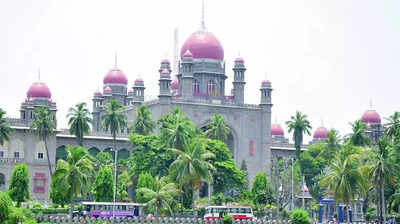Hyderabad: After 66 years of legal battle, the Telangana high court has closed Civil Suit-7 of 1958 (known as CS-7 litigation over Nizam-era properties), stating it was fought over non-existent plots and there was no land either for adjudication or distribution among alleged legal heirs of Nizam’s officials.
A bench of Chief Justice Alok Aradhe and Justice N V Shravan Kumar pronounced the judgment on Jan 9 on the long legal tussle for 25 revenue villages (known as makhtas) including prime areas such as Raidurg, Shivrampalli, Balapur, Somajiguda etc., in two districts of Hyderabad and Rangareddy.
Saif Ali Khan Health Update
The suit was initiated in 1953 in the city civil court by the daughter of nawab Moinuddula Bahadur who had served the Nizam. The daughter, Sultana Jahan Begum, was seeking partition of her father’s properties given to him by the Nizam as ‘Jagir’. She produced some schedule of properties spread over vast extent of land and also movable assets such as jewellery and cash.
In 1958, the case was transferred to the high court which renamed it as CS-7 of 1958. Though there were 254 items in the schedule spread over several annexures, there was not much tussle about the first 229 items which were minor. But the items mentioned from 230 to 254 indicated as many as 25 villages and over the years several claimants joined the legal battle invoking relationship with Nizam’s officials.
During the course of the case, the daughter along with some legal heirs entered into a compromise to distribute the assets among themselves. They also obtained a preliminary decree from the HC on April 6, 1959, that it was Paigah property and they had a vested right over it.
Appearing for the state, additional advocate general Imran Khan said all the land was vested with revenue department on account of Jagir Abolition Act. Referring to the compromise decree cited by the claimants, he said the state was not a party to the compromise.
He also referred to clause 4(g) of the preliminary decree of April 6, 1959, from which it was evident that 20 legal heirs were entitled to the properties mentioned (25 makhtas) in items 230 to 254 of Schedule ‘A’ annexed to the decree if the properties were restored or released in favour of Asman Jahi Paigah. If they were restored or released in favour of the Paigah, the arrears of income, future income, compensation or sale proceeds derived from the said properties had to be distributed among the legal heirs, as per the 1959 decree.
“But admittedly there is no material to indicate that the properties mentioned in serial No. 230 to 254 of Schedule ‘A’ to the preliminary decree have been restored or released in favour of the Paigah. Since there was no formal release order, the compromise decree cannot be a foundation for further adjudication,” Khan said.
While the suit was pending, several third parties and legal heirs of the nawab had filed applications claiming land in the 25 makhtas attached to the revenue department, citing a 1977 released order by the survey commissioner.
The bench faulted their claims by questioning why they had waited till 2023 to approach the court if the release order was issued in 1977. The court also expressed doubts on the document and rejected the claims since the land was not available physically. The bench also relied on the report of two receivers appointed by the court who said there was no land in the 25 makthas to be adjudicated now.
The bench, however, directed the registry to prepare a formal decree in respect of the first 229 items for passing in favour of the 20 legal heirs.






